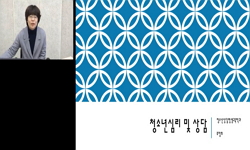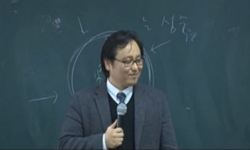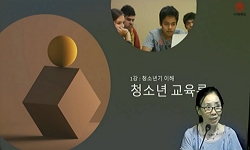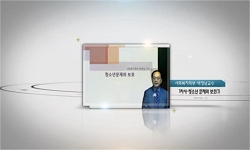본 연구는 청소년들의 체격과 체력을 평가하는 데 있어 골연령이 더욱 효과적일 것이라는 점을 가정으로 진행하였으며, 본 연구의 목적은 청소년기의 학생들을 대상으로 골연령과 역연령을...
http://chineseinput.net/에서 pinyin(병음)방식으로 중국어를 변환할 수 있습니다.
변환된 중국어를 복사하여 사용하시면 됩니다.
- 中文 을 입력하시려면 zhongwen을 입력하시고 space를누르시면됩니다.
- 北京 을 입력하시려면 beijing을 입력하시고 space를 누르시면 됩니다.

청소년들의 골연령과 역연령을 통한 체격과 체력의 차이 검증 = The Verification of Physique and Physical Fitness Differences Through Bone Age and Chronological Age Among Adolescents
한글로보기https://www.riss.kr/link?id=A107310943
- 저자
- 발행기관
- 학술지명
- 권호사항
-
발행연도
2021
-
작성언어
-
-
주제어
청소년 ; 골연령 ; 역연령 ; 체격 ; 체력 ; Adolescent ; Bone Age ; Chronological Age ; Physique ; Physical Fitness
-
KDC
570
-
등재정보
KCI등재
-
자료형태
학술저널
-
수록면
318-331(14쪽)
- 제공처
-
0
상세조회 -
0
다운로드
부가정보
국문 초록 (Abstract)
본 연구는 청소년들의 체격과 체력을 평가하는 데 있어 골연령이 더욱 효과적일 것이라는 점을 가정으로 진행하였으며, 본 연구의 목적은 청소년기의 학생들을 대상으로 골연령과 역연령을 통해 체격과 체력의 차이를 규명하여 청소년들의 체격, 체력의 균형적 발달과 학생들의 건강증진에 기여하는 데 있다. 연구 대상은 6세부터 16세까지의 총 1100명의 모집단 중 PAPS(학생건강체력평가)와 TW3 방법 연령 기준 에 따라 총 874명(남자 483명, 여자 391명)의 11세∼16세 청소년을 대상으로 하였으며, 생물학적 성숙지표를 나타내는 골격성숙도는 X-ray 촬영 후 TW3(Tanner-Whitehouse 3) 방법을 이용하여 평가하였고 역연령은 출생년월을 사용하였다. 체격은 신장계, InBody270(Biospace, Korea)을 이용하여 2개 항목을 측정하였고 체력측정은 총 7개 항목으로 근력, 평형성, 민첩성, 순발력, 유연성, 근지구력, 심폐지구력을 측정하였다. 자료처리 방법으로는 SPSS 25.0을 사용하여 독립표본 t-test를 실시하였고, p< .05 수준에서 유의한 것으로 간주하였다. 본 연구의 결과는 다음과 같다. 첫째, 골연령과 역연령을 이용한 체격의 비교에서 11세, 12세 남자는 키와 체중에서 유의한 차이가 나타났으며, 13세 남자는 체중에서 유의한 차이가 나타났다. 11세 여자는 체중과 신장, 12세 여자는 신장에서 유의한 차이가 나타났다. 둘째, 골연령과 역연령을 이용한 체력의 비교에서 11세 남자는 근력, 순발력, 유연성, 심폐지구력에서 유의한 차이가 나타났고 12세 남자는 근력, 순발력, 심폐지구력, 13세 남자는 유연성에서 유의한 차이가 나타났다. 11세 여자는 근력, 순발력, 유연성, 근지구력, 심폐지구력, 14세 여자는 유연성에서 유의한 차이가 나타났다. 이러한 결과로 본 연구에서는 급격한 골 성장이 이루어지는 시기에는 골연령을 기준으로 체격과 체력을 평가하는 것이 역연령 기준으로의 평가보다 정확하다는 결과를 도출하였다.
다국어 초록 (Multilingual Abstract)
This study was conducted on the assumption that bone age would be more effective when it comes to physique and physical fitness assessment for adolescents, and the purpose of this study was to identify the differences in physique and physical fitness ...
This study was conducted on the assumption that bone age would be more effective when it comes to physique and physical fitness assessment for adolescents, and the purpose of this study was to identify the differences in physique and physical fitness for students in their adolescence through bone age and chronological age in order to contribute to the well-balanced physique and physical fitness development in adolescents and the health improvement in students. Total 874 adolescents(483 males, 391 females) aged 11∼16 were selected as subjects out of the total population of 1100 adolescents aged 6∼16 based on the PAPS(Physical Activity Promotion System) and age standards of the TW3 method; and skeletal maturation, which symbolize the indicators of biological maturation, were evaluated by using the TW3(Tanner-Whitehouse 3) method after hand-wrist radiographs, and birth date was used for chronological age. A stadiometer and InBody 270 (Biospace, Korea) were used to measure 2 components in physique. A total of 7 components in physical fitness, which included muscular strength, muscular endurance, flexibility, power, cardiovascular endurance, balance, agility, were measured as well. A independent samples t-test was conducted for data processing using SPSS 25.0, and the significance level was set at p< .05. The study results are as follows. First, bone age and chronological age used for physique comparison in males aged 11 and 12, height and weight showed significant difference; in males aged 13, weight showed signicant difference. Weight and height in females aged 11, and height in females aged 12 showed significant difference. Second, bone age and chronological age used for physical fitness comparison in males aged 11, muscular strength, power, flexibility, cardiovascular endurance showed significant difference; in males aged 12, muscular strength. power, cardiovascular endurance; in males aged 13, flexibility showed significant difference. Muscular strength, power, flexibility, muscular endurance, cardiovascular endurance in females aged 11, and flexibility in females aged 14 showed significant difference. As a result, this study concluded that in a period of rapid skeletal growth, evaluating physique and physical fitness based on bone age is more accurate than evaluating based on chronological age.
동일학술지(권/호) 다른 논문
-
- 한국응용과학기술학회 (구.한국유화학회)
- 신민철(Min Chul
- 2021
- KCI등재
-
국비 지원 뷰티 교육기관의 교육서비스품질이 지각된 유용성 및 진로준비행동에 미치는 영향
- 한국응용과학기술학회 (구.한국유화학회)
- 손가빈(Ga-Bin Son)
- 2021
- KCI등재
-
RAW 264.7 세포에서 레드비트의 항산화 및 항염증 등의 생리활성 연구
- 한국응용과학기술학회 (구.한국유화학회)
- 지중구(Joong-Gu Ji)
- 2021
- KCI등재
-
골프 드라이버 스윙 시 운동역학 요인들과 비거리 관련성 분석
- 한국응용과학기술학회 (구.한국유화학회)
- 임영태(Young-Tae Lim)
- 2021
- KCI등재





 ScienceON
ScienceON 스콜라
스콜라






